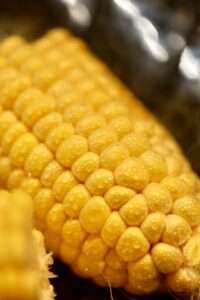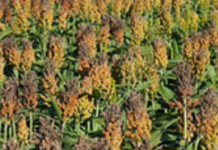
MANHATTAN, Kan. – There was a day, says Ward Upham, when it was very easy to decide which sweet corn variety to plant.
“You simply chose a cultivar and planted when the soil temperature reached 55 degrees,” said Upham, a horticulture expert at Kansas State University. “Now it has become more complicated due to genetic advances in sweet corn.”
Breeders have successfully incorporated certain genes to improve upon what was once considered ‘standard’ sweet corn, Upham said.
Here’s a rundown of what to know about each type of sweet corn commonly available to homeowners.
Standard
According to Upham, “this our ‘old’ sweet corn and contains a ‘sugary gene,’ called su. Standard corn should be isolated from corn, popcorn, supersweets and ornamental corn – or, not planted within 200 to 250 feet or differ in maturity by 12-14 days.
Plant standard sweet corn when the soil temperature reaches at least 55 degrees F. Upham’s recommended varieties include Honey and Cream, Silver Queen, Sterling Silver, Jubilee, and Merit.
Supersweet
These have up to three times the sweetness of standard corns and hold their sweetness longer after harvest due to the sh2 gene. “They do have some drawbacks such as tougher kernels and a lack of some of that good ‘corn’ flavor,” Upham said.
Supersweet corn also needs to be isolated from other sweet corn types and are sensitive to cooler soils.
Plant when the soil temperature reaches 65 F. Upham’s recommended varieties include Candy Store, Florida Staysweet, Sugar Loaf, Sweet Time, and Sweetie.
Sugar Enhanced
Upham said these are probably the most popular type of sweet corn grown due to their tender kernels, good flavor and less sensitivity to cool soils. Plant when the soil temperature reaches 60 F. The sugar enhanced, which benefit from the se gene, do not need to be isolated, other than from the supersweets.
“They hold their post-harvest sweetness longer than standard types but will not hold sweetness as long as the supersweets,” said Upham, who recommends Bodacious, Ambrosia, Sweet Temptation, Delectable, and Miracle.
Triplesweet
These include a blend of genes from standard, supersweet and sugar enhanced types, in hopes of combining the best characteristics of each. Upham recommends Serendipity, Polka, Avalon, and Frisky.
Upham and his colleagues in K-State’s Department of Horticulture and Natural Resources produce a weekly Horticulture Newsletter with tips for gardening and maintaining home landscapes. The newsletter is available to view online or can be delivered by email each week.
Interested persons can also send their garden- and yard-related questions to Upham at [email protected], or contact your local K-State Research and Extension office.




